- Getting around Lijiang. Dont stay in the Old Towns more than 2 days, there is nothing to do. KRISS Oct 9, 2013 05:46
- 2013 Beijing Temple Fair BENNYLAU Feb 26, 2013 03:29
- Malaysian traveling from KUL - LAX vis Shanghai PVG ZATI_DY Jan 3, 2013 20:15
Return of the Dragon
- Views: 4379
- |Vote: 0 0
- |Add to Favorites
- |Recommend to Friends
Where?
It’s a bit scary to go to a place that even a Chinese person—if you ask them—will huddle their eyebrows into the center of their face and say “where?” Heck, if they don’t know about it, it must not be a very good place to go.
Not true. All great explorers defied eyebrow huddling and mouths turned into the dot of a question mark. They set off, in spite of where others planned to set off to, and many a time discovered some of the most beautiful landscapes on earth.
It’s like that adage about the trees: if beauty exists—nay, an ecosystem—and nobody tells the travel guides or agents about it, does it still exist?
You bet.
A Well-Kept Secret
In the tiny folded-wing county of Henan Province called Hui Xian, along the north-western spine of that curled beast slumbering in the heart of China’s topography, lays a treasure-trove of natural wonders only just becoming a haven for tourists. Hui Xian is too oft-overlooked though, trumped by Henan’s other multiple attractions: the fame of the Shaolin Warriors ‘neath the stunning Song Mountains; Luoyang, the Capital of the Zhou Dynasty; and the centuries-old Longmen Grottoes chock full of a carved narrative more thrilling than those extolled in Indiana Jones’ films and more mysterious than anything Lara Croft could get her rapelling limbs on.
But Hui Xian has its own headliners, which are quickly spreading the news that this place has got it going on. Not only is the region a natural geological museum, where the story of the eons can be read in the open book of the cliff walls, but it is said to be the birthplace of Daoism, home of multiple-colored Dragons, and the site of one of Chinese military history’s most exciting—and daring—face-offs. Plus, the sheer, vertigo-inducing cliffs have afforded one of China’s most brilliant and stunning engineering feats. I’ve never seen anything like this place in all my travels.
No Turning Back
As the bus down-shifted into dieseled staccato pops, trying to desperately climb the ever-steepening pitch, my attention turned outwards. I hadn’t expected the scenery to change so suddenly, but change it did: first these mountains were just a pale hem on the horizon, then they had enfolded us, and now we were surrounded, the horizon crowded out by the green-capped buttercream hillsides. The mountains came in waves, choppy and plateaued. They seemed both impossible and necessary.
The bus, sounding almost relieved to be purring into a parking lot, let us off at the Hui Long Scenic Area entrance gate. Hui Long, or Return of the Dragon, is known as the birthplace of Daoism. Legend has it that Lao Zi, on sojourn from his scholarly duties, was wandering the vales and ridges. Perhaps out of equal parts grit and moxy he’d made it as far as he was, but he refused to go higher: the sheer rock faces and daunting heights kept him from going further. The gods knew Lao Zi was capable of more, so they prodded him by sending two dragons to the mountain tops to swell the springs and rivers, flooding the lower regions where Lao Zi was camped out. Forced to climb higher, despite his fears and limitations, he continued making his way until finally he had reached the peak at Hui Long. It was here, atop the peak, that Lao Zi conceived the Dao—the “Way”.
Hide and Seek
So we made our own way from the entrance gate of the scenic area parking without quite knowing how we ourselves would scale these mountains. Luckily no dragons were called upon to prod us upward under the ruse of natural disasters. Though the mountains were daunting, it’s true, the Chinese government had come to our rescue—5 years ago. They built a road, a thin string of pavement that clings to the outer lip of these proud ridges and hillsides. We made our way along it, almost blindly for the sharp turns, but stopped when we reached a sign for “Dragons Playing with Water” and decided to check it out.
The Road to Heaven
The Dragons were hiding it seems, or maybe they’d moved on since their services hadn’t been called upon in eons (literally), but the area was nice. A well laid-out trail paralleled a small brook that sometimes spilled into waterfalls from the boulders it met along the way. The water was clear like I hadn’t seen in China before and it was nice to have to raise my voice over the sound of the water’s laughing instead of raising it over the ubiquitous bellow of traffic in the city. After reaching an emerald green pool that was fed by a small waterfall whose source appeared to come like a sigh out of the rocks, we turned around and went back to the road. We could have continued on, deeper into the mountains, though the trail had become just a matted down trampling of grasses. It was beckoning, in its own way, though we felt that our way, at this time, was to turn back and aim for Lao Zi’s peak.
The road between Dragons Playing with Water and Lao Zi’s Peak, also known as Lao Ye Ding, is called the Road to Heaven. I’m not going to write anything else about that road because I want you to sit back and imagine what that road and its views must have been like. After all, the views from that road inspired a religion. It’s both a metaphorical and a literal road. There aren’t many roads like that in the world.
Grand Proportions
When the road flattens out it opens into a huge Little Grand Canyonesque valley. This is the parking lot to begin the ascent to Lao Ye Ding, Lao Zi’s peak. It’s hard to tell if it’s the wind or the beauty of the view that takes your breath away. Apricot-soaked cliffs ribbon around the valley which, at its widest, is 500 meters across. Paleozoic, Mesozoic, and Cenozoic stratigraphy encode the ages along 200 meter cliff faces, an open geological museum. Shrubbery-tufted spires of rock pin down an otherwise richly brocaded green sea. On the opposite side of the valley Tai Hang mountain can be seen, held up by the Tortoise’s back. Gazing at rock shapes here is almost as subjective and creative as a day spent on one’s back picking figures and stories out of the clouds.
The Way
Again the Chinese government steps in to lend a helping hand: conveniently stringing a sky-tram from the plateaued parking lot to the Daoist temple atop the peak: the venerable site of Lao Zi’s ponderings. Flying over the treetops will get you only partway up the peak, though—you’ll need to climb 880 very steep and very treacherous stairs to complete the journey to the top.
As with the majority of China’s peaks, there’s a functioning village at the top of those steps, including some very ruddy-faced Daoist monks who will tell your future or accompany you in traditional Daoist prayer or even offer some lessons on the Dao. This temple boasts an iron roof, the last of its kind in the realm of iron roofs. It’s a point of pride for the locals, but it makes sense that this temple has a top made of some stuff stronger than others, weathering the open valley’s tantrums over the ages.
Hang In There
Hanging like a hangnail off the edge of this thumb of a mountain top with nothing but steep rock faces and deep valleys below, this village seems impossible. The centerpiece is the temple, then a narrow stairway will take you along a makeshift avenue of doorways. A few of those doorways are restaurants, which will serve up delicious bowls of noodles. The doorways lead to a plaza, the locals’ hangout, a bizarre lounging spot with a few huge trees giving shade from the unobstructed mountain sun. More than a handful of people squatted around listening to a man preach televangelist-style in front of a cavernous half-building that looked like a trash heap with a incense altar in front of it accompanied by a glittery orange and white boombox extolling pious music. It seemed that this was the true temple, this unglorified gathering, prayers aimed toward a building of less than nothing, dispersed into the sky. The way is subjective, it seems. As is the why.
Information
If You Go:
the best way is to ask around at local travel agents and see if they have a tour that will go to this place. It's actually pretty difficult to manage your own rides in this area, as there aren't taxis. It's much more convenient to go with a tour group and have the transportation all worked out for you. Tour packages are cheap to this area as its an unusual destination--about 380 RMB for 3 days and nights.
Getting There:
by Train from Beijing to XinXiang 180 RMB
by bus from XinXiang to Hui Xian 60 RMB
Hire mini-buses to navigate the road to Hui Long's entrance and up the Road to Heaven
20-70 RMB depending on your negotiating skills
There are several hotels in Hui Xian of very reasonable prices. You should get a very nice room for no more than 120 RMB
Or, from the parking lot of Lao Ye Ding (where you can ascend by sky-tram to the peak) continue into the mountains along the road (don't go back the way you came). Eventually you'll get to a tiny town at the base of a mountain called Guo Liang village. This village is full of friendly people, good eats, and an amazing environment--for very little money. (Look for my upcoming article featuring Guo Liang village for more information).



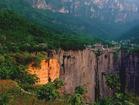
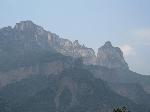



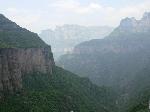
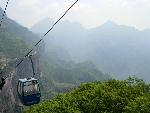

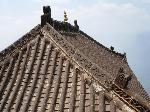
 Copyright © 1998-2025 All rights reserved.
Copyright © 1998-2025 All rights reserved.
1.
May 21, 2007 03:33 Reply
LEMONCACTUS said:
I'm planning a trip to Henan in the summer, this place sounds amazing. Thanks for sharing :)
2.
May 17, 2007 19:09 Reply
WINDENERGY said:
Wow, STOCKOV, I had never even heard of this mountainous area. I had to get out my Lonely Planet travel guide to find out where it is. What a great getaway from the hustle and bustle of Beijing! These are the kind of places thatI'm looking for in China. Thanks for sharing your adventure! Stories like yours are whyI frequently log on to TCG.Com
Happy adventuring!
__WINDENERGY__
3.
May 17, 2007 06:08 Reply
FAISAL said:
"most beautiful landscapes on earth" I must have to agree with you. What a great way to start your writing that I really liked.